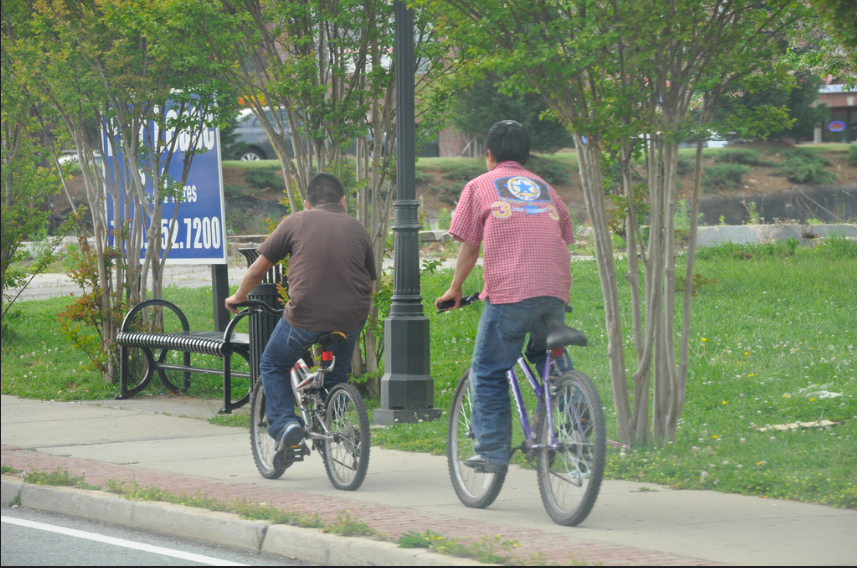Media coverage of cycling deaths consistently suggests that the deaths are acceptable and the victims were at fault, a new study shows.
University of South Florida researchers Julie Bond and Erin Sheffels used a scientific technique called "critical discourse analysis" in their review of 189 news reports of 94 bicycling deaths in Hillsborough County, Florida, between 2009 and 2018 — and discovered substantial bias.
The articles, Sheffels said, "reflect an assumption that responsibility for safety lies on the bicyclist."
Here are some patterns they identified:
Lack of agency for the motorist
Reporters had a habit of distancing the driver from the death. In 111 cases, the accounts referred to the "truck," "car" or "vehicle" as the actor in the collision.
For example, one account read:
[The cyclist] was standing on the corner of Waters Avenue and Florida Mining Boulevard at 2:14 p.m., when a Mack truck made a sharp right turn and hit [the cyclist], deputies said.
In many cases, driver's name did not appear in the story at all.
"In almost all the articles motorist agency was eliminated from the story," Sheffels said Thursday in a webinar explaining the findings.
Sentence constructions were also subtly biased. The reporters often used passive construction to avoid singling out blame: "A bicyclist was hit by a car," rather than "John Doe stuck the bicyclist with his car." Other studies have shown that passive language has a major impact on the way people assign blame in other situations, such as how jury members review sexual assault cases.
Framing the deaths as unconnected
Media accounts tended to treat each death as isolated, rather than part of a larger pattern with an identifiable set of causes. Hillsborough County is one of the most dangerous areas in the country for cyclists. But many reports offered no wider framework to understand the deaths, Bond and Sheffels found.
Of the 189 account analyzed, 133 treated the cycling deaths as an isolated event, unconnected from any wider public concerns. "Episodic" coverage — they called it — creates the impressing that cycling deaths are "normal," and to be accepted, rather than part of a wider epidemic.
In addition, these accounts typically reflected "an assumption that responsibility for safety lies on the bicyclist." This "narrative functioned to remove blame from the motorist," said Sheffels.
Roughly 30 percent of the stories did connect the death to wider concerns like infrastructure or motorist or cyclist education. News coverage was much more likely to be "thematic," the study found, in hit-and-run deaths, because then the crash was seen as a crime.
Socioeconomic status and marginalization
Cyclists were implicitly blamed for their own deaths in a majority of the media coverage. But Bond and Sheffels found that the socioeconomic status of the cyclist affected how likely they were implicitly blamed.
When the victim was poor — most Hillsborough County cycling deaths were in low-income neighborhoods — he or she was more likely to be characterized as being at fault.
Status wasn't always apparent, but news reports often carried clues by referring to where a victim lived or his or her profession. Other "identity markers" included attire, gender, age, socioeconomic status.
"All of those traits can stigmatize bicyclists," Sheffels said.
In cases where the victim had more social capital, coverage tended to be more sensitive, for example, offering accounts from family members.
Media accounts that blame cyclists for their own deaths are a national problem. When 22-year-old Sylvia Bingham was killed by a truck driver in Cleveland in 2009, the Cleveland Plain Dealer noted that "she was not wearing a helmet at the time of the accident," even though a doctor said it would not have made a difference.
Often, the media bias stems from insensitive initial information given to the press by police. In New York City, for example, Citi Bike rider Dan Hanegby was blamed by a police spokesperson for "swerving" into traffic before he was hit by a tour bus in 2017. Video footage of the crash released much later showed that Hanegby never veered from his path.
Police even blame cyclists in non-fatal incidents, suggesting that drivers have hegemony over the roads. Many reports show how the media and local officials conspire to create a "fear of cyclists" that is not supported by any statistical evidence.
A similar study earlier this year by MacEwan University Professor Heather Magusin, studying media coverage of pedestrian deaths in Canada, identified similar patterns of blame.





